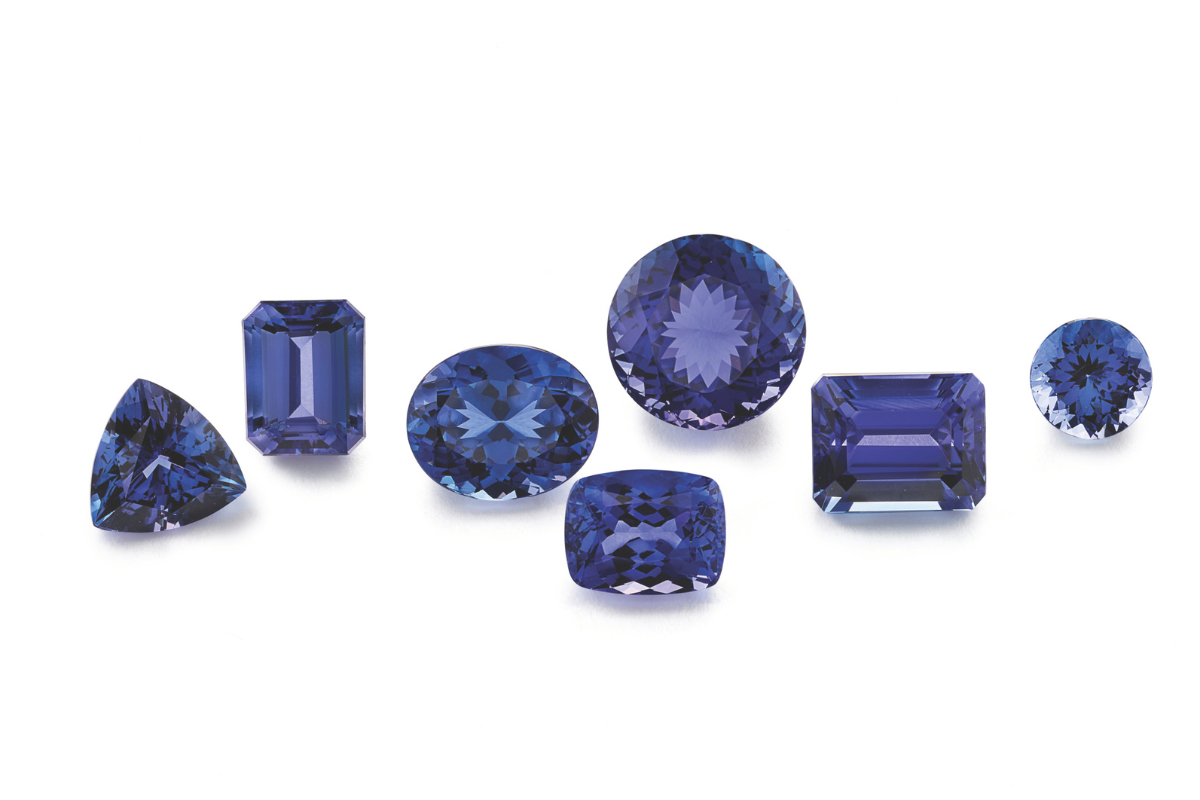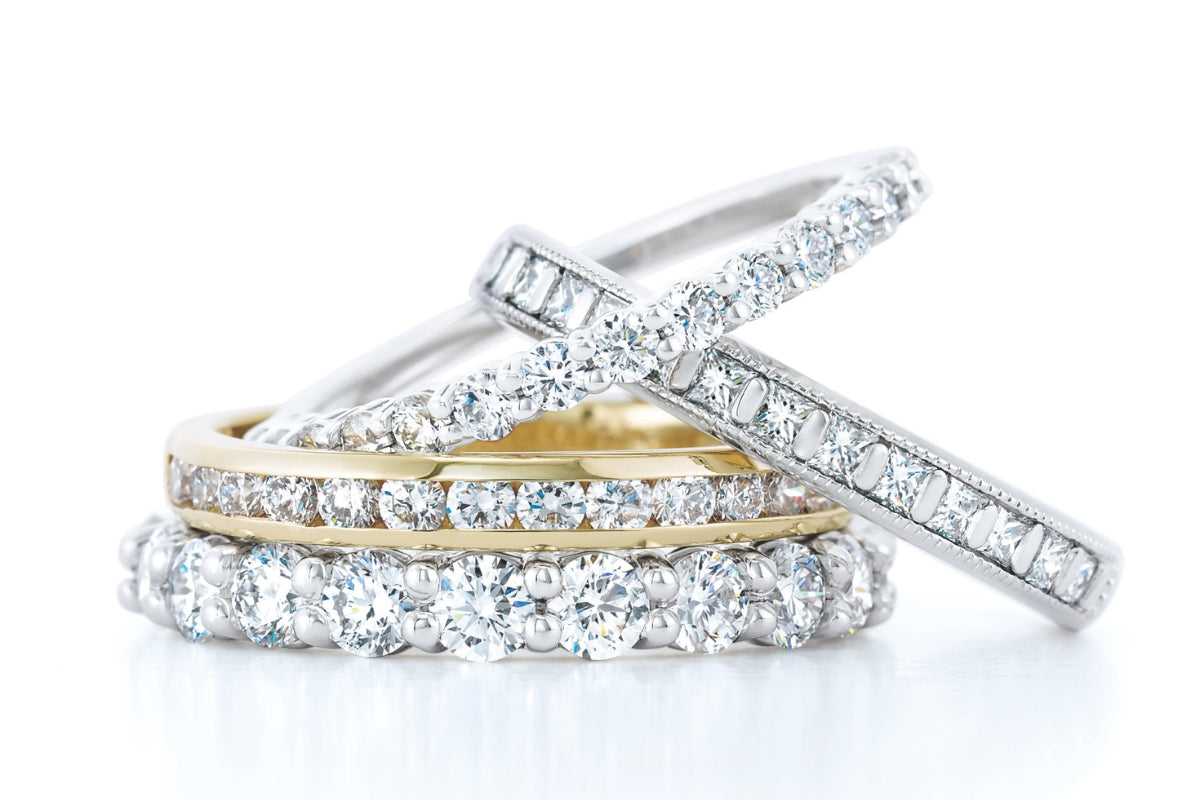December is a month filled with festive cheer, twinkling lights, and the promise of a fresh start. It is also home to three stunning birthstones — turquoise, tanzanite, and zircon — each offering its own unique history, symbolism, and beauty. Whether you're shopping for a December birthday, looking for a thoughtful gift, or simply intrigued by these beautiful stones, understanding the rich characteristics of December's birthstones will help you appreciate their unique qualities. From the vivid blue of turquoise to the deep purple hues of tanzanite, these gemstones are not only beautiful, but are also associated with powerful meanings and healing properties.
In this post, we’ll explore each of December’s birthstones in detail, uncovering their origins, significance, and the various ways they are used in jewelry today. Whether you’re drawn to their colors, symbolism, or sheer beauty, December's birthstones are sure to captivate.

Turquoise: The Timeless Treasure
Turquoise is one of the oldest known gemstones, with a history that dates back thousands of years. It has been prized for its striking color, durability, and rarity. The name “turquoise” comes from the French word for "Turkish," as the stone was originally brought to Europe from Turkey by way of Persia. This brilliant blue-green stone was highly valued in ancient Egypt, where it was used in jewelry, amulets, and even tombs. Cleopatra, the famed Egyptian queen, was known to favor turquoise for her own personal adornment. Turquoise has also been a symbol of protection and healing among Native American tribes, particularly in the Southwest, where it has been a significant part of their culture and spiritual practices for centuries.
Color and Appearance
Turquoise is known for its distinct blue to green color, which can range from a soft robin's egg blue to a deeper, vibrant green, depending on the mineral content in the stone. The most sought-after turquoise is a clear, bright blue with little to no matrix (the veining or patterning within the stone), but turquoise can also come in various shades with beautiful web-like patterns running through it. These patterns add to its unique appearance and can make each piece of turquoise jewelry one of a kind.
Symbolism and Healing Properties
Turquoise has long been associated with healing and protection. In many cultures, it is believed to promote balance, tranquility, and overall well-being. The stone is thought to protect its wearer from negative energies and bring peace of mind. Turquoise is also believed to aid in communication, helping individuals express themselves more clearly and confidently. As a birthstone, turquoise is linked to good fortune and positive energy, making it a fitting stone for those born in December.
On a physical level, turquoise is thought to have a variety of healing properties. It has been traditionally used to help with respiratory issues, as well as to promote healing from illness or injury. Additionally, some believe that wearing turquoise can help soothe mental stress and calm the mind.
Turquoise in Jewelry
Turquoise is a versatile gemstone, often set in both white gold and yellow gold jewelry, and is a favorite in Southwest, Native American, and boho styles. It pairs beautifully with other gemstones and can be worn in rings, necklaces, earrings, and bracelets. Because turquoise is relatively soft compared to other gemstones, it requires special care to avoid scratching or damaging the stone. However, when cared for properly, turquoise can be a lasting and beautiful addition to any jewelry collection.

Tanzanite: The Rare Gem of a Lifetime
Tanzanite is one of the newest gemstones to be added to the list of traditional birthstones, officially gaining recognition in 2002. It was discovered in 1967 in the Merelani Hills of northern Tanzania, near the famous Mount Kilimanjaro. Tanzanite was named after its country of origin and is considered one of the rarest gemstones on Earth. The gemstone was initially marketed by Tiffany & Co., and it quickly became a sought-after stone due to its unique color and rarity. Tanzanite is found only in a small area in Tanzania, making it incredibly valuable and rare.
Color and Appearance
Tanzanite is known for its stunning blue-violet color, which can shift in hue depending on the lighting. Under different types of light, tanzanite can appear blue, purple, or even burgundy, giving it an intriguing and ever-changing appearance. The gemstone's remarkable color is due to the presence of trace elements of vanadium in its structure, which is responsible for its mesmerizing blue-violet hue. Tanzanite is often faceted in a variety of shapes to highlight its unique color, and it is frequently used in engagement rings, pendants, and earrings.
The stone's popularity has also been attributed to its incredible brilliance, which is enhanced by the way it refracts light. Tanzanite is known for its ability to sparkle and shine in a way that draws attention, making it a perfect choice for those looking for a gemstone that stands out.
Symbolism and Healing Properties
Tanzanite is thought to have a number of symbolic meanings. It is often associated with transformation and spiritual growth, helping those who wear it to achieve a higher state of consciousness. The stone is said to encourage self-expression, creativity, and intuition. Tanzanite is also believed to assist with emotional healing, providing clarity during times of confusion or uncertainty.
In terms of physical healing properties, tanzanite is said to support the immune system, aid in detoxification, and reduce stress. It is also thought to improve communication and strengthen relationships, making it a popular choice for those seeking to enhance their connections with others.
Tanzanite in Jewelry
Tanzanite is a striking gemstone that pairs well with both white and yellow gold, as well as platinum. It is often used in high-end jewelry, including engagement rings and statement pieces. However, tanzanite is relatively soft compared to other gemstones, so it should be handled with care to avoid scratching or chipping. Despite its relative softness, tanzanite remains a popular and highly coveted gemstone due to its rare beauty.

Zircon: The Brilliant and Ancient Gem
Zircon is one of the oldest minerals on Earth, and it has been used as a gemstone for thousands of years. The name "zircon" comes from the Arabic word "zarkun," meaning "cinnabar" or "red," due to its reddish color. Zircon has been used throughout history in jewelry and as a signet stone. In ancient times, it was believed to have protective and healing properties and was used in amulets and talismans.
Despite its long history, zircon has recently gained more attention as an alternative to diamonds due to its brilliance, color range, and affordability. It is important not to confuse zircon with cubic zirconia, a synthetic diamond simulant. While cubic zirconia is a popular, inexpensive material, zircon is a natural gemstone with unique properties and characteristics.
Color and Appearance
Zircon is available in a wide range of colors, including blue, red, green, yellow, and colorless. The most popular color for zircon is blue, which is typically achieved through heat treatment, but natural blue zircons can also be found. Zircon’s brilliance is comparable to that of a diamond, thanks to its high refractive index. This gives zircon a dazzling sparkle that makes it a favorite in fine jewelry. Zircon is also highly durable, making it suitable for everyday wear, although it can be prone to scratching if not treated with care.
Symbolism and Healing Properties
Zircon is often associated with wisdom, strength, and prosperity. It is thought to bring positive energy and to encourage mental clarity, making it an excellent choice for those seeking to enhance their focus and decision-making abilities. In some cultures, zircon is considered a protective stone, guarding its wearer from harm and misfortune.
On a physical level, zircon is believed to help with insomnia and promote restful sleep. It is also thought to aid in digestion and detoxification, making it a versatile stone for overall health and well-being.
Zircon in Jewelry
Zircon is a versatile gemstone that can be used in a variety of jewelry styles, from delicate rings to statement necklaces. Its brilliance and wide range of colors make it a popular choice for those looking for an affordable yet stunning gemstone. Whether set in platinum, yellow gold, or white gold, zircon can add a dazzling touch to any piece of jewelry. It is also often used as a diamond alternative in engagement rings, offering similar sparkle and brilliance at a more affordable price point.

Choosing the Perfect December Birthstone
December’s birthstones — turquoise, tanzanite, and zircon — are each unique in their beauty, history, and symbolism. Turquoise is perfect for those drawn to its ancient cultural significance and vibrant blue-green hues. Tanzanite, with its rare and stunning color-changing qualities, appeals to those seeking something truly special and transformative. Zircon, with its dazzling brilliance and affordability, is an excellent option for those looking for an alternative to diamonds while still enjoying a stone with great sparkle and clarity.
Whichever stone you choose, each of December’s birthstones carries its own charm and significance, making them the perfect choice for celebrating a December birthday or adding a meaningful touch to any piece of jewelry. Soha Diamond Co. is here to help you add December’s birthstones to your engagement ring, a necklace, or even a family cluster ring. Whether you're drawn to the traditional elegance of turquoise, the rare beauty of tanzanite, or the brilliant sparkle of zircon, these December birthstones are sure to captivate and inspire.
Soha Diamond Co. is a jewelry store located in Madison, Wisconsin:
https://maps.app.goo.gl/J8zaeQUYWAk23hDNA
View custom Soha engagement ring styles on Instagram:
https://instagram.com/sohadiamondco
Browse Soha Diamond Co. engagement ring inspirations:
https://www.sohadiamondco.com/pages/our-engagement-rings
Learn about Soha’s engagement ring design process:
https://www.sohadiamondco.com/pages/design-process
Book your custom engagement ring visit with Soha:




